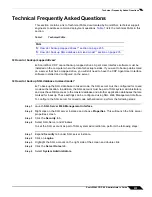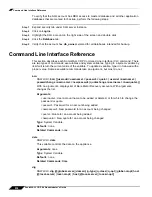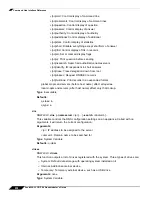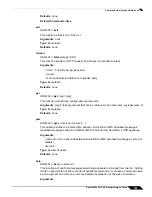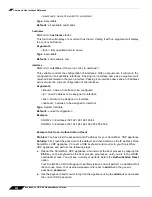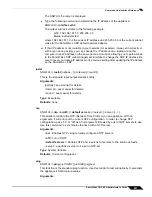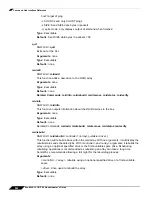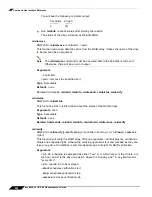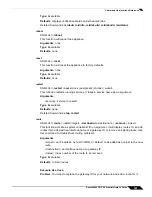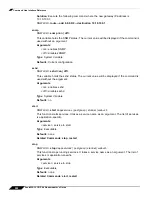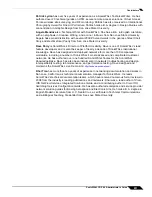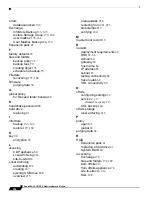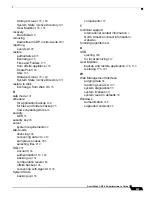
Glossary
249
SonicWALL CDP 6.0 Administrator’s Guide
File Allocation Table (FAT)
: A table that the operating system uses to locate files on a disk.
Due to fragmentation a file may be divided into many sections that are scattered around the
disk. The FAT keeps track of all the pieces.
FileSet Backup Method
: One method of configuring file and folder backups on agents. The
FileSet method is new in the SonicWALL CDP 6.0 release. Files are backed up as a set of files
for best synchronization, with new revisions created according to a configured schedule. Data
de-duplication is used to back up only the blocks of data that have changed between scheduled
intervals. The defined File Set and Schedule are combined into a Backup Task for execution.
High Availability
: The capability of a mission-critical device, such as a SonicWALL security
gateway, to automatically failover to a backup device in the event of a hardware failure on the
primary unit.
Hyper Text Transfer Protocol (HTTP)
: The underlying protocol used by the World Wide Web.
HTTP defines how messages are formatted and transmitted, and what actions Web servers and
browsers should take in response to various commands.
IP address (Internet Protocol)
: An Identifier for a computer device on a TCP/IP network.
Networks using the TCP/IP protocol route message based on the IP address of the destination.
The format of an IP address is a 32-bit numeric address written as four numbers separated by
periods. Each number can be zero to 255. For example, 1.160.10.240 could be an IP address.
Local Area Network (LAN)
: A computer network that spans a relatively small area. Most LANs
are confined to a single building or group of buildings. However, one LAN can be connected to
other LANs over any distance using telephone lines and radio waves. A systems of LANs
connected in this way is called a wide-area network (WAN).
Master Boot Record (MBR)
: A small program that is executed when a computer boots up.
Typically, the MBR resides on the first sector of the hard disk. The program begins the boot
process by looking up the partition table to determine which partition to use for booting. It then
transfers program control to the boot sector of that partition, which continues the boot process.
Policy
: A set of rules administered from the SonicWALL CDP Web Management Interface.
Policies are assigned directly to agents and define backup rights, quota, and other SonicWALL
CDP capabilities.
Quota
: The maximum amount of data a SonicWALL CDP agent can back up to the SonicWALL
CDP appliance. The quota can be managed according to the number of files, the size of data
on the appliance disk, or the size of the files being backed up. The two sizes can differ due to
the data de-duplication feature.
Redundant Array of Independent Disks (RAID)
: A failover method used to protect against
data loss in the event of disk failure.
Static IP address
: An IP address that is unique and unchanging. Unlike dynamic IP addresses,
a static IP address remains the same when you make a new Internet connection.
Upstream CDP appliance
: An offsite CDP appliance on your WAN that is used for secure
backup and recovery.
User Datagram Protocol (UDP)
: A connectionless protocol that sends and receive datagrams
over an internet protocol (IP) network.
Universal Serial Bus (USB)
: An external bus standard that supports data transfer rates of
12Mbps. A single USB port can be used to connect up to 127 peripheral devices, such as mice,
modems, and keyboard. USB also supports Plug-and-Play installation and hot plugging.
Summary of Contents for CDP 6.0
Page 15: ...xiv SonicWALL CDP 6 0 Administrator s Guide...
Page 99: ...Creating a Global Policy 84 SonicWALL CDP 6 0 Administrator s Guide...
Page 215: ...Recovering Data from Microsoft SQL Server 200 SonicWALL CDP 6 0 Administrator s Guide...
Page 229: ...Replacing the Downstream CDP Appliance 214 SonicWALL CDP 6 0 Administrator s Guide...
Page 267: ...Contributors 252 SonicWALL CDP 6 0 Administrator s Guide...

